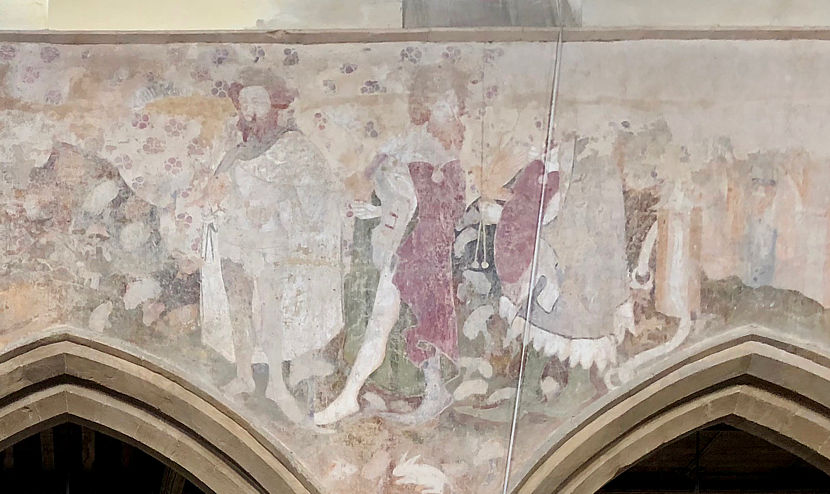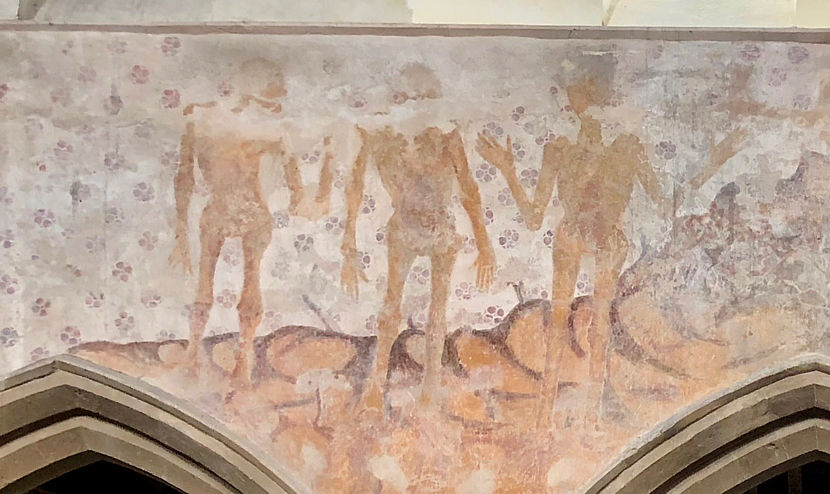Raunds, Northamptonshire (†Peterborough)
The Three Living & The Three Dead

In this 15th century example the two trios meet in a landscape, a verdant green, with what seem to be funghi but may once have been flowers, rabbits at the right, and bare rocks at the left. The photograph above shows the Living. There are faint remains of what looks like a crown on the living man nearest the centre, and all are certainly sufficiently well-dressed to be kings. They are out hawking, and the apparently very corpulent man on the right still has his hawk on his wrist. The dangling jesses of the hawk held by the man on the left are also still visible, as are saddle-girths or stirrups at the extreme right.

The naked but not completely skeletal¹ dead stand at the left, the one nearest the centre with arms and hands raised. It is hard to say whether the painter wanted to show the moment just before the two parties meet; on the face of it the Living show no sign of consternation at the encounter (if anything, the Dead look more surprised than they do), but this may be entirely illusory – the living man in the centre may be indicating something with his right hand, his head turned towards his companion at the far right may indicate questioning about whether his eyes deceive him. Similarly there may have been something of symbolic significance painted among the heaped rocks in the centre of the painting – there may even have been speech-scrolls making it clear whether or not the two groups have seen each other yet. When even tiny details are lost from paintings as full of meaning as this one, full interpretation is made difficult.
Raunds has other paintings, including The Seven Deadly Sins and St Christopher on these pages.
¹ They seem to have been skeletal originally, but in 1904 the painting was retouched and the skeletons given bodies. Drawings made then, and now in the Victoria and Albert Museum describe the paintings as ‘frescoes by Rutherford’. This is wrong on all counts, but it might suggest that what happened in 1904 amounted to a repainting, rather than a restoration. Eve Baker’s restoration in 1963 may have had to make some corrections to put back, as far as might be possible, what the original artist painted. The notes in the church at Raunds also make reference to ‘food set around’, but I can see nothing identifiable as this now.
† in page heading = Diocese